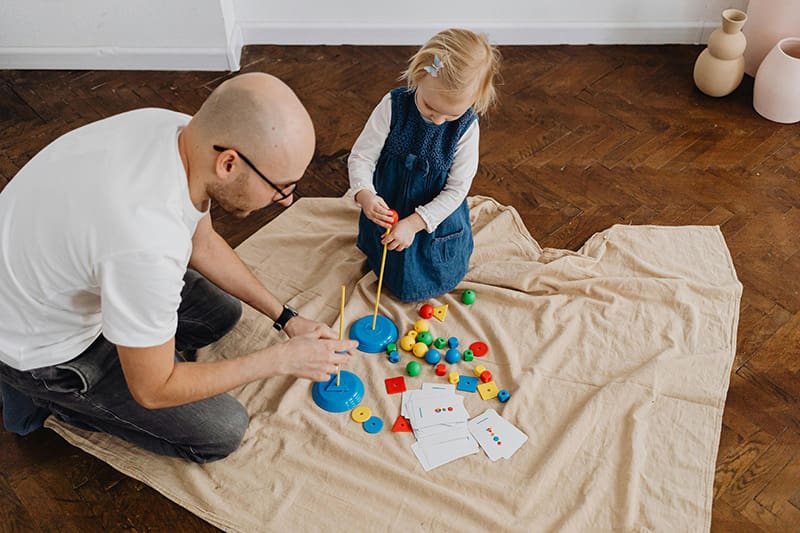Exactly How Behavior Therapy Can Change Your Approach to Emotional Difficulties
Behavior Therapy uses a structured structure for attending to psychological challenges. It highlights evident behaviors, allowing individuals to identify and customize maladaptive patterns. By utilizing methods such as cognitive restructuring and personal goal setting, this approach promotes resilience and psychological policy. Lots of have actually experienced significant transformations through these approaches. What continues to be to be discovered are the certain approaches that can cause enduring change in one's emotional landscape.
Recognizing Behavioral Therapy: Key Ideas and Principles
Behavior Therapy acts as a structured strategy to dealing with emotional challenges with the adjustment of maladaptive behaviors. This healing design is based in the principles of finding out concept, highlighting that actions can be learned and unlearned. It mainly concentrates on observable habits instead of inner ideas or feelings, making it an action-oriented and functional method. Secret principles consist of support, where favorable behaviors are urged with rewards, and punishment, which discourages unwanted actions. Behavioral Therapy additionally uses methods such as direct exposure therapy, which slowly presents customers to been afraid circumstances to lower anxiety. Additionally, it highlights the value of setting certain, measurable objectives to track progression. By actively involving clients in their therapy, Behavior Therapy seeks to empower people, furnishing them with strategies to change adverse actions with even more adaptive ones. This technique has actually been commonly utilized for numerous psychological difficulties, consisting of stress and anxiety conditions, anxiety, and fears.
Identifying Unhelpful Thought Patterns
Exactly how can people identify the thought patterns that contribute to their psychological obstacles? The procedure frequently begins with self-reflection and mindfulness. People can pay very close attention to their internal discussion, particularly throughout moments of stress or anxiety. Keeping an idea journal can be advantageous, permitting them to document their ideas and determine repeating motifs or unfavorable patterns.
Usual purposeless thought patterns include all-or-nothing thinking, overgeneralization, and catastrophizing. By classifying these ideas, individuals can determine just how they affect their feelings. It is likewise crucial to analyze the proof supporting these ideas, as several are based upon distortions instead than truth.
Participating in discussions with trusted specialists or buddies can give extra understandings, helping individuals to familiarize their cognitive predispositions. Inevitably, recognizing these unhelpful thought patterns is a vital action in resolving psychological obstacles and cultivating much healthier mental behaviors.
Practical Techniques for Taking Care Of Anxiousness and Clinical Depression
Countless functional techniques can aid people manage stress and anxiety and clinical depression properly. Cognitive Behavioral Therapy (CBT) emphasizes determining and reframing negative thought patterns, making it possible for individuals to challenge distortions and cultivate a more balanced perspective. Mindfulness methods, such as reflection and deep breathing exercises, permit individuals to secure themselves in today, minimizing frustrating feelings connected with anxiousness. In addition, keeping an organized daily regimen can offer a feeling of normalcy and control, which is often interfered with by these psychological obstacles. Taking part in regular exercise is another effective device, as exercise releases endorphins that improve state of mind. Social assistance plays a critical function; getting in touch with friends, family members, or support system can relieve feelings of isolation. Journaling emotions and ideas can additionally promote self-reflection and understanding. By incorporating these techniques into everyday life, individuals can create much healthier coping mechanisms, ultimately causing improved emotional wellness.
The Function of Setting Goal in Behavioral Therapy
In Behavior Treatment, the facility of clear objectives plays a vital function in leading people towards their wanted results. Establishing specific purposes permits effective monitoring of progression, which can improve inspiration and responsibility (ABA Therapist). This organized method not only aids in handling psychological obstacles however additionally promotes a feeling of accomplishment as people function towards their goals
Value of Clear Goals

Tracking Progress Efficiently
Reliable tracking of development in Behavioral Therapy is closely tied to the facility of clear objectives. These objectives act as standards against which customers can determine their advancements. By defining particular, quantifiable, attainable, pertinent, and time-bound (SMART) goals, customers can obtain a tangible understanding of their development. On a regular basis reviewing these goals allows both the therapist and customer to assess development, determine challenges, and adjust methods appropriately. This procedure cultivates a feeling of accountability and motivation, as clients witness their very own growths with time. Additionally, tracking progression via journals or progression graphes can enhance self-awareness, helping customers identify patterns in their emotional actions. Ultimately, reliable development tracking is integral to achieving long lasting change in Behavioral Treatment.
Structure Resilience With Behavioral Methods
Exactly how can individuals grow durability despite emotional obstacles? Structure strength needs the application of reliable behavioral techniques that equip people to navigate misfortune. Cognitive-behavioral techniques, such as reframing unfavorable ideas, make it possible for individuals to test damaging ideas and replace them with positive point of views. This shift fosters an extra flexible feedback to stressors.
Constant technique of mindfulness can improve psychological regulation, permitting individuals to stay based throughout rough times. Participating in analytical workouts likewise equips individuals with practical tools to take on obstacles head-on, fostering a feeling of control and skills
Social support plays a critical duty; urging open communication and looking for connection with others can buffer versus psychological distress. In addition, establishing achievable objectives promotes a sense of achievement, reinforcing self-efficacy. By systematically utilizing these behavioral methods, individuals can develop a resistant state of mind, far better furnished to deal with and get over psychological obstacles.
Success Stories: Real-Life Transformations With Therapy
Structure resilience through behavioral strategies prepares for transformative journeys in therapy. Numerous individuals have experienced profound adjustments by involving with Behavior Treatment. Sarah, as soon as overwhelmed by anxiety, found out to determine and challenge her unfavorable idea patterns. With regular method of exposure strategies, she gradually re-engaged with social tasks, ultimately finding pleasure in formerly frightening scenarios.
Similarly, Mark battled with clinical depression, really feeling trapped in a cycle of despondence. With the advice of his specialist, he established coping systems such as cognitive restructuring and mindfulness. With time, Mark reported enhanced motivation and boosted partnerships, marking a significant shift in his overview on life.
These success stories illustrate the power of Behavioral Treatment in promoting emotional resilience. By equipping find more info people with sensible tools and strategies, therapy not only addresses immediate obstacles but additionally equips customers to browse future hardships with self-confidence.
Often Asked Questions
Just How Long Does Behavioral Therapy Normally Take to Program Outcomes?
Behavioral Therapy usually takes a number of weeks to months to show visible results, depending upon individual situations and the particular problems being dealt with. Consistency and active involvement in sessions significantly affect the performance and speed of progression.
Can Children Take Advantage Of Behavior Modification too?

Are There Any Type Of Side Effects of Behavioral Treatment?
Behavioral Treatment generally has very little side results, as it concentrates on altering actions instead of medicine. Individuals may experience temporary psychological pain or resistance to challenging challenging ideas and sensations throughout the procedure.
Just how Do I Select the Right Specialist for Me?

Picking the right therapist entails assessing credentials, specialties, and individual compatibility. Looking into qualifications, checking out testimonials, and organizing preliminary consultations can help individuals figure out the most effective suitable for their demands and emotional obstacles.
Is Behavior Treatment Reliable for All Mental Health And Wellness Issues?
Behavior Treatment is not widely reliable for all mental health concerns. While it benefits many problems, such as anxiety and depression, some people might call for alternate methods or therapies customized to their details requirements and difficulties.
Behavioral therapy likewise utilizes methods such as exposure therapy, which gradually presents customers to been afraid circumstances to decrease anxiety. By actively involving clients in their treatment, behavioral therapy seeks to equip individuals, equipping them with methods to replace unfavorable behaviors with more adaptive ones. Cognitive Behavior Therapy (CBT) highlights recognizing and reframing negative thought patterns, making it possible for people to test distortions and cultivate a more balanced point of view. In behavioral treatment, the establishment of clear objectives plays an essential function in assisting individuals toward their wanted results. Behavioral therapy normally takes several weeks to months to show obvious outcomes, depending on specific scenarios and the specific concerns being addressed.